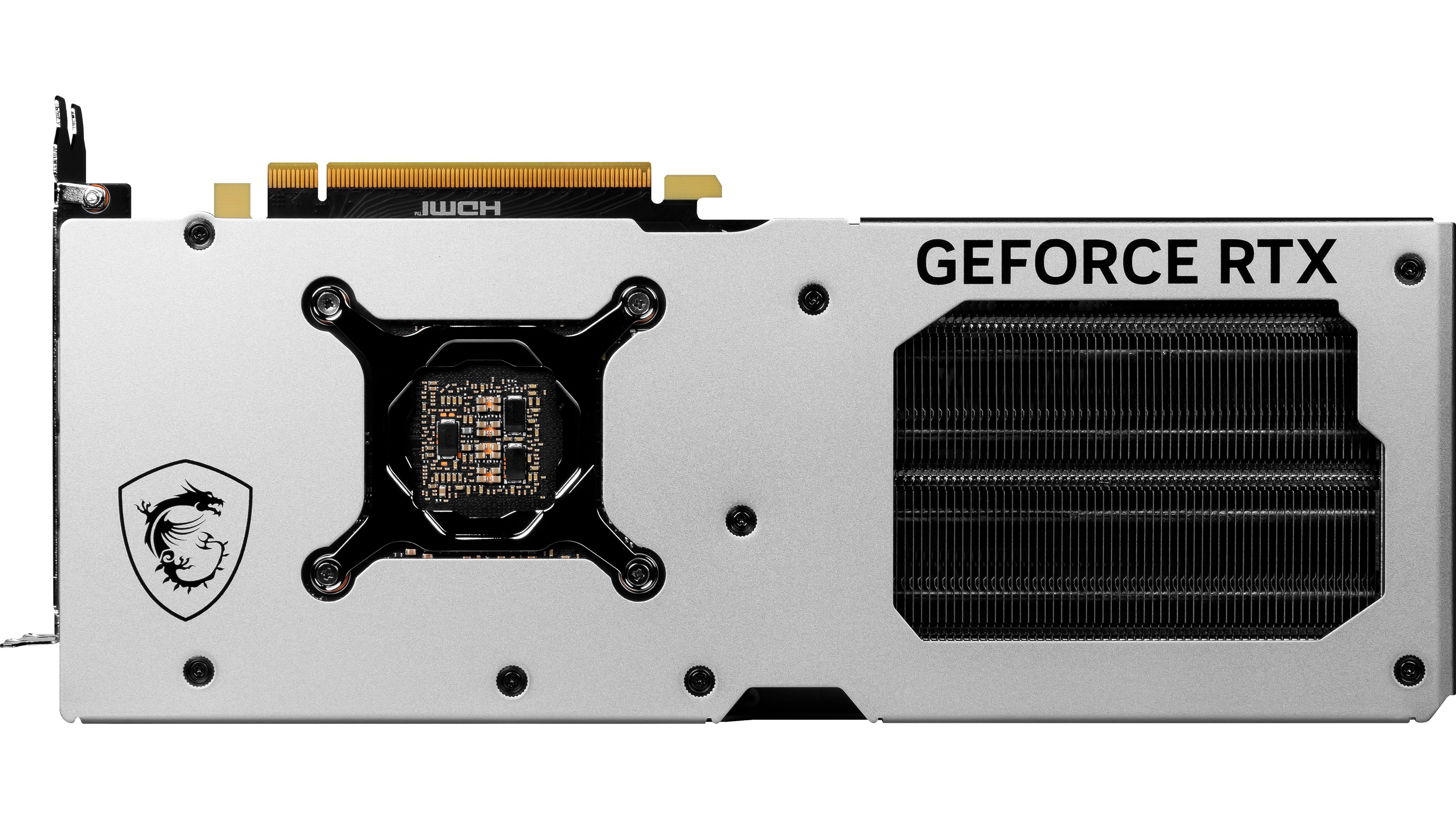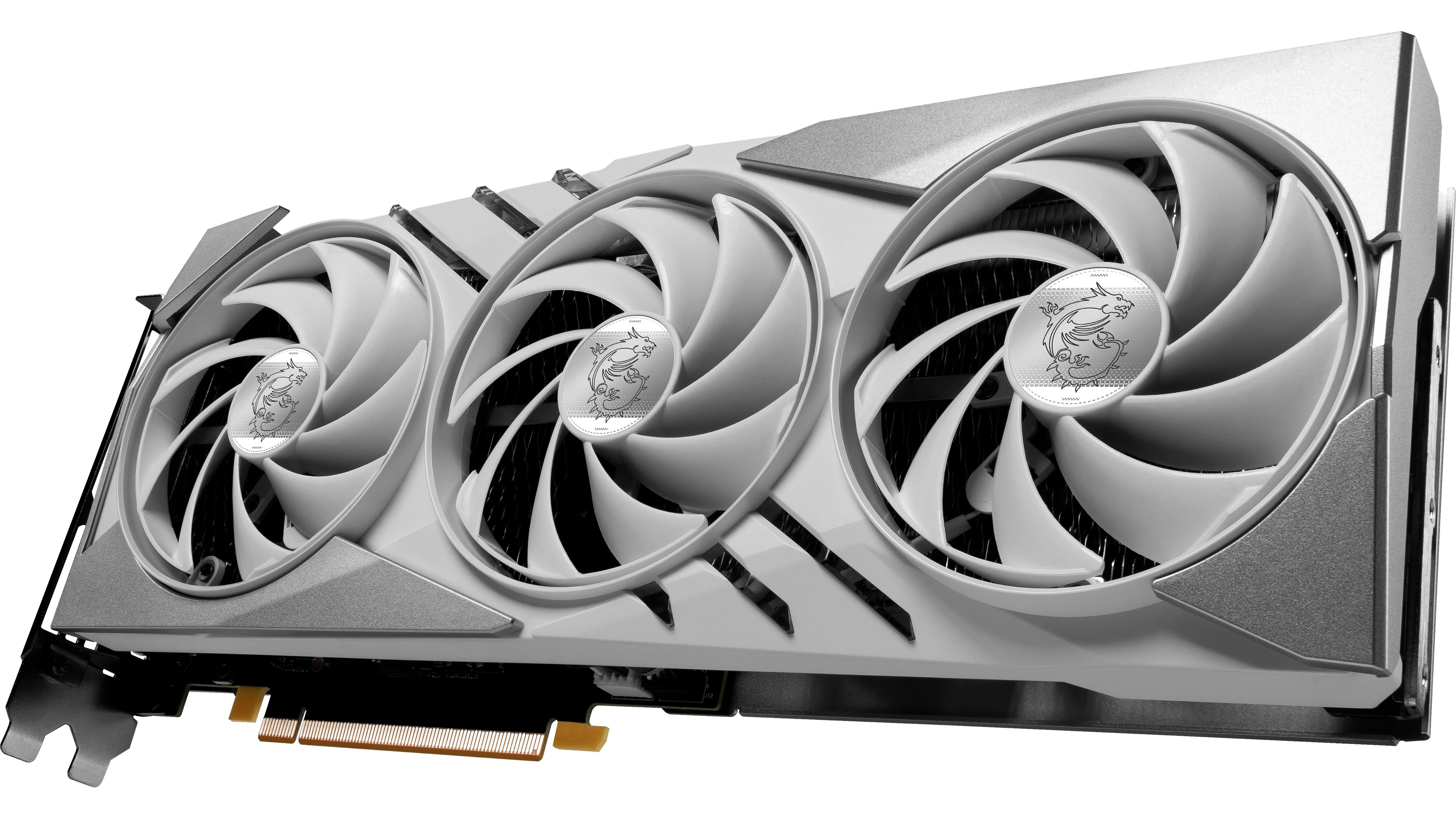MSI Equips RTX 4060 Ti 16GB With 16-Pin Power Connector

It's a fact that the 16-pin (12VHPWR) power connector isn't going away, and it recently received a new revision (12V-2x6) to improve safety. Therefore, it shouldn't surprise us that future lower-tier SKUs, such as the GeForce RTX 4060 Ti 16GB, could start using the 16-pin power connector. The beefier version of the GeForce RTX 4060 Ti will reportedly hit the market on July 18 to compete with the existing best graphics cards.
The GeForce RTX 4060 Ti Gaming X Slim renders (courtesy of Twitter user hongxing2020) reveal the upcoming Ada Lovelace graphics card with a 16-pin power connector. It's a perplexing design choice for sure since the GeForce RTX 4060 Ti 16GB is a 165W graphics card, so the choice to use a 16-pin power connector is overkill, that is, unless MSI is recycling PCBs for the GeForce RTX 4060 Ti Gaming X Slim. A single 8-pin PCIe power connector, the predominant vendor choice, suffices to power the GeForce RTX 4060 Ti 16GB.
Many consumers shun the 16-pin power connector because it melted on multiple GeForce RTX 4090 graphics cards. However, the GeForce RTX 4060 Ti 16GB doesn't pull as much power as the Ada flagship, so there shouldn't be a problem. In addition, the revised 12V-2x6 power connector aims to aid user installation further. Unfortunately, the angle of the GeForce RTX 4060 Ti Gaming X Slim's render doesn't show which version of the 16-pin power connector MSI has placed on the graphics card. The GeForce RTX 4070 Founders Edition already uses the 12V-2x6 power connector, and MSI has released ATX 3.0 power supplies with the same connector. Therefore, the GeForce RTX 4060 Ti Gaming X Slim will likely use the revamped power connector.
The GeForce RTX 4060 Ti Gaming X Slim is the new addition to MSI's Gaming series, which already has a bunch of custom GeForce RTX 4060 Ti SKUs. The GeForce RTX 4060 Ti Gaming X Slim features a more compact body with a standard dual-slot design as opposed to other SKUs occupying up to 2.5 slots. The graphics card also boasts a different triple-fan shroud with a silver and white trim to cater to DIYers that require a GeForce RTX 4060 Ti 16GB for a white build.




The 8GB and 16GB versions of the GeForce RTX 4060 Ti utilize the same cut-down AD106 silicon with 4,352 CUDA cores. Clock speeds are identical, too, with the base. Since the GeForce RTX 4060 Ti Gaming X Slim carries MSI's "Gaming X" moniker, it'll likely come with a small factory overclock. Nonetheless, the graphics card's TDP should be equal to or slightly higher than the 165W TDP. Despite the 16-pin power connector, a 450W power supply should be the minimum to power the GeForce RTX 4060 Ti Gaming X Slim.
The memory subsystem between the vanilla GeForce RTX 4060 Ti and the 16GB variant is similar. The GDDR6 memory chips are still clocked at 18 Gbps, so with a 128-bit memory interface, we're looking at 228 GBps of memory bandwidth on both models. The extra memory will help certain gamers that require more than 8GB of memory but don't expect a substantial performance uplift. Nonetheless, it's still restricted by the narrow 128-bit memory bus.
According to insider rumors, many vendors have shown their disinterest in the GeForce RTX 4060 Ti 16GB. They're not wrong since the 16GB model will retail for $499, $100, or 25% more expensive than the 8GB model for double the VRAM, which won't bring big benefits in every scenario. With an MSRP of $499, custom GeForce RTX 4060 Ti 16GB models will start pushing into GeForce RTX 4070 territory.
Get Tom's Hardware's best news and in-depth reviews, straight to your inbox.
We wonder if Nvidia thinks the GeForce RTX 4060 Ti 16GB will sell well. Or perhaps the chipmaker only launched this model to silence AMD about offering 16GB graphics cards with a $499 starting point. With the GeForce RTX 4060 Ti 16GB, Nvidia can now flaunt how its GeForce 16GB graphics cards start at $499.

Zhiye Liu is a news editor, memory reviewer, and SSD tester at Tom’s Hardware. Although he loves everything that’s hardware, he has a soft spot for CPUs, GPUs, and RAM.
-
Amdlova Overkill on priceReply
Overkill on Vram
Overkill on Power
But the shelf accept, but no one will buy -
Alvar "Miles" Udell As long as it comes with an adapter it'll be fine, but since 12VHP cables can require a 650w or higher PSU to be fitted with them or purchase for use, and a system with this card may not be using that size PSU, there could be a problem.Reply -
BillyBuerger I thought this was part of the point of the 12VHPWR or 12V-2x6 is that the 4 signal pins indicate the power of the PSU so that the card can determine if enough power is available to feed the GPU. So that all GPUs and PSUs, from low power to high power could use the same connector and ensure that the required power exists. There's no reason it can't be used on a lower power card like this.Reply -
Kamen Rider Blade Honestly, there isn't really much reason to implement (12VHPWR or 12V-2x6) until you reach the 300 Watt Board Power and up.Reply
Any Graphics Card below 300 Watts can stick to PCIe Bus Power / 1x 6-Pin EPS or 1x 8-Pin EPS
Once you get past 600 Watts, you can Add a 6/8-pin EPS for 675 W / 750 W / 825 W configs.
After that, you should stick with 2x (12VHPWR AKA 12V-2x6) connector -
PlaneInTheSky wauw, which genius at MSI came up with that decisionReply
adding a completely unecessary connection that is known the catch fire
avoid like the plague